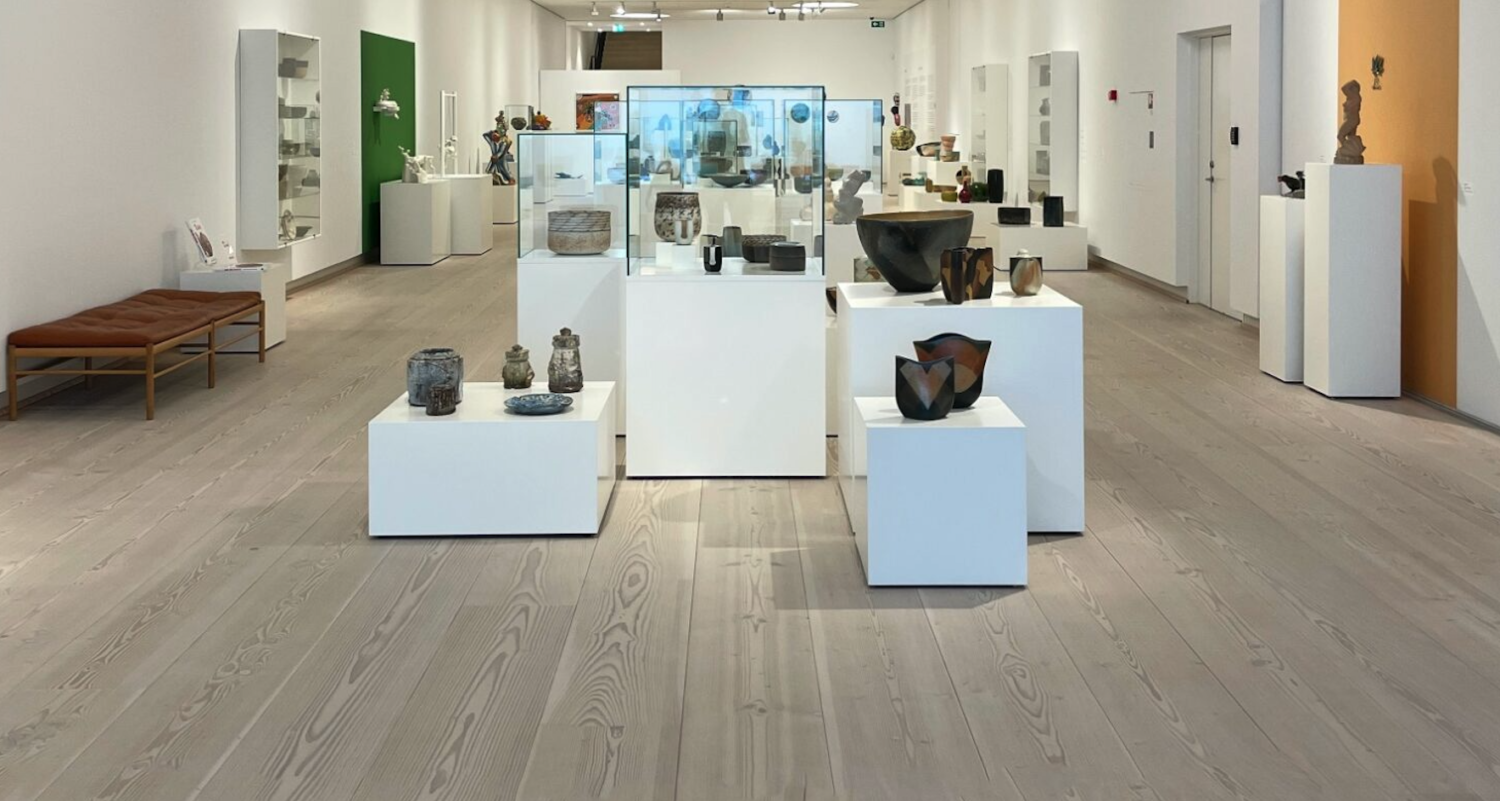
A travel through a collectors universe
For decades, Erik Veistrup has collected ceramics. Since 2005, he has donated more than 1150 ceramic pieces to the museum, and it is a selection of these donations that are now on display. Erik Veistrup personally selected and arranged the 100 or so pieces – a very effective presentation.
Gratitude for being back at a museum after months of shutdown is the first feeling that strikes me as I enter Clay. The museum is situated in a former dower house connected to Hindsgavl Palace, designed by the architect J. D. Herholdt and constructed in 1856–1857. In 2015, a new annex was opened, designed by Kjær and Richter. The annex is partially buried, with only some building sections visible from the park, including the sunshades made of vertical brick elements. This preserves the view of Lillebælt and the park, which is itself worth a visit, with its collection of large ceramic pieces. Placing the extension below the terrain seems quite a logical choice for a ceramics museum, as does the use of brick.
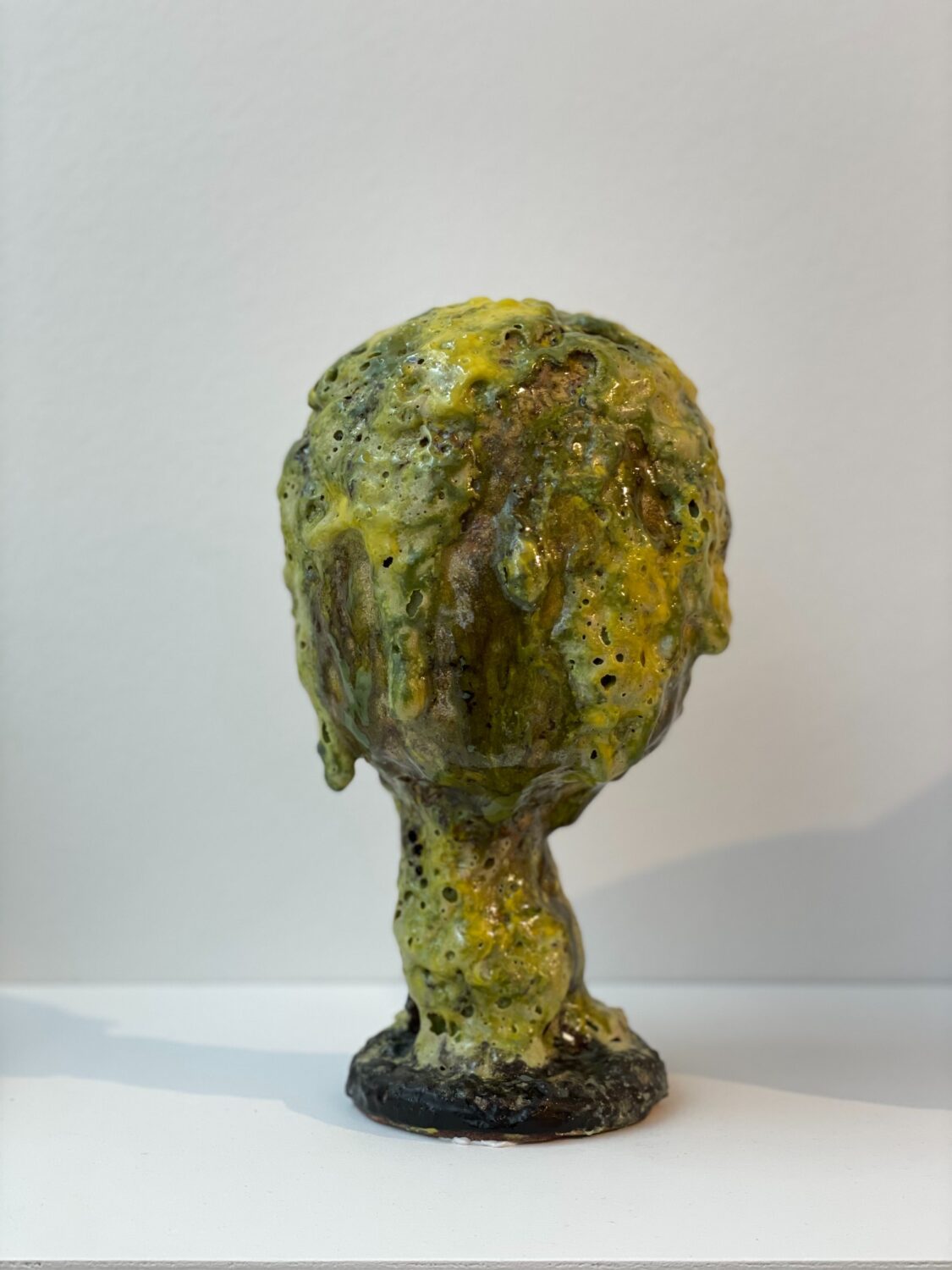
On my way down the stairs to the exhibition I find myself on a very different journey than the one so many of us have been on over this past year. There are similarities across time and techniques within the exhibition, and contemporary pieces by Morten Løbner Espersen and Klara Lilja highlight this theme from the outset. Our current time is present as we subsequently encounter works by Jais and Salto. Next, we encounter Veistrup’s own beginning as a ceramics collector: Gertrud Vasegaard, Christian Poulsen and Alev Siesbye. The early pieces engage in a parallel correspondence with the contemporary. New constellations emerge, whenever one looks in a new direction. The exhibition is concluded under the skylight at the end of the hall. Here, daylight streams down the wall, contributing to the subtleness of a large group of works by Bente Skjøttgård.
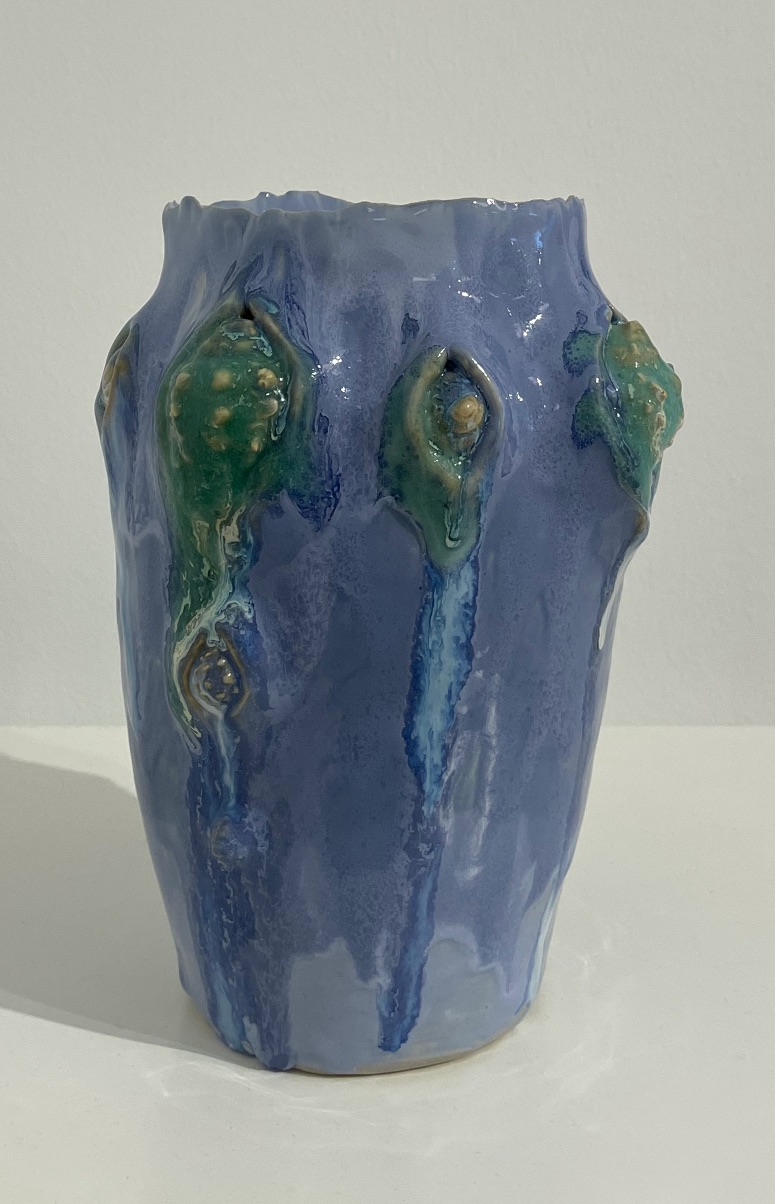
The exhibits are clustered into groups on open or glazed-in plinths at varying heights. The spectator can walk round most of the objects and get up close to them. The dialogue that emerges among the groups can be observed from several angles and experienced from different perspectives. A few of the groups are placed on shelves on the wall; this establishes a focus that draws in one’s gaze and attention. Around the pieces, spatial experiences arise, matching the broad and spacious nature of Veistrup’s collection overall. A characteristic quality of the exhibition is the high degree of diversity. The visual interactions of the pieces across time, techniques, glazes, colours and forms help sharpen the viewer’s curiosity. Seeing Christian Poulsen’s precise glaze work in an interplay with Gutte Eriksen’s ultra-tactile raku-fired pieces is an impactful experience. The two artists shared a common dedication to materials and a diligent and thorough approach to their medium.
The artists take different approaches to the clay, and the resulting pieces differ accordingly
From ceramic art to functional craft objects. A dish with a spout created by Ursula Munch-Petersen is both things at once. Thanks to the care and diligence the ceramic artists applied in their work, we can include art in our daily lives by incorporating and using ceramics craft objects. Clay and glaze are difficult to control, and creating these objects takes experience and knowledge. Experimentation changes over time. The varied surface textures, rough and smooth, ornamented and plain. From Christian Poulsen’s perfectly finished glazed forms to Morten Løbner Espersen’s Magic Mushrooms, which almost seem to be pure glaze.
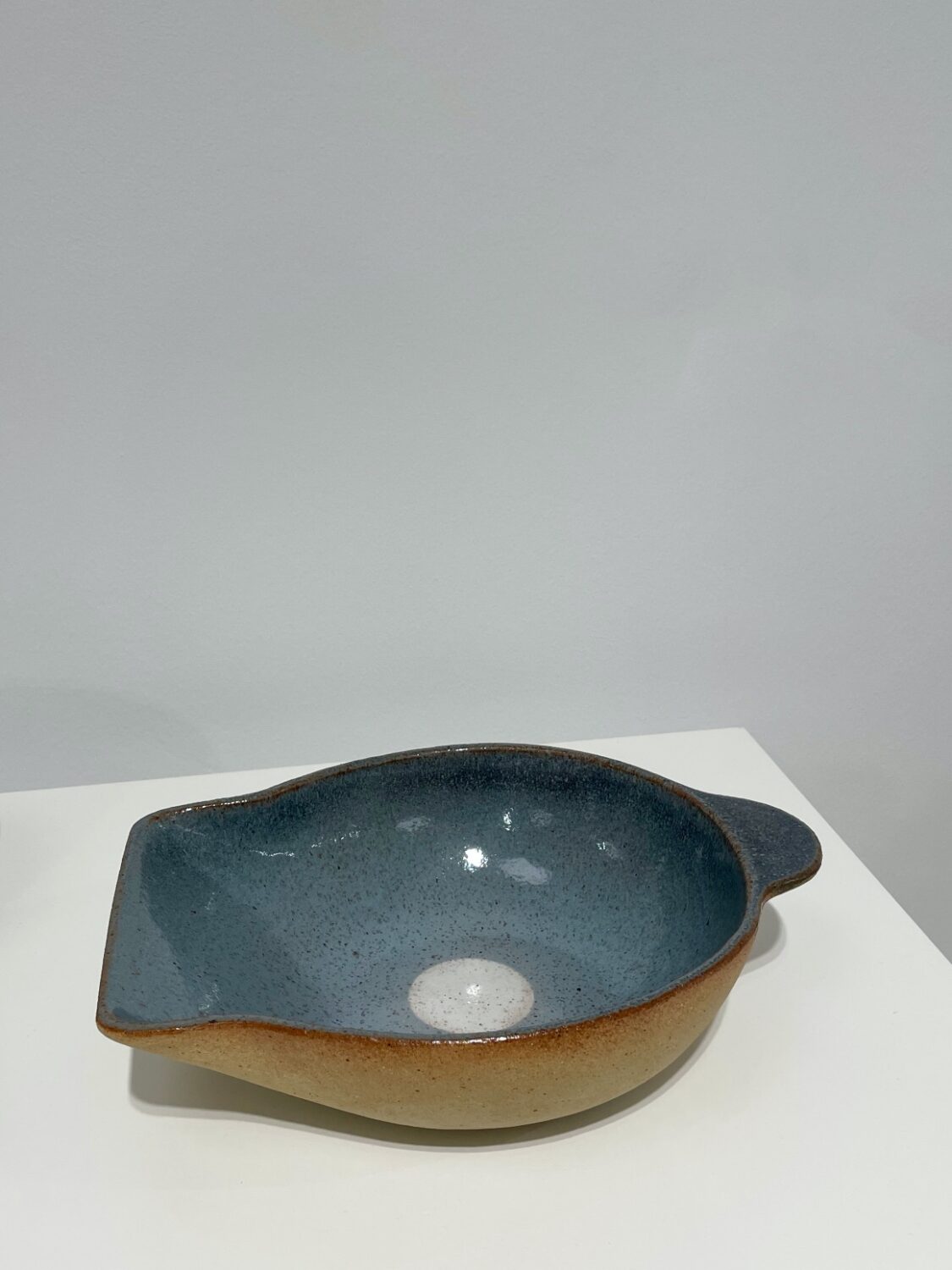
Vasegaard’s studies are richly represented in the exhibition. I am particularly drawn to a small lidded jar standing on delicate glaze feet. The heavy clay is raised up, and the form of the lidded jar is highlighted. Forms, process and techniques are mixed in Pernille Pontoppidan Pedersen’s pieces. There is something magically ruin-like about these Useriøsiteter (Frivolities). The ceramic pieces are equals, what combines them is the craftsmanship and the focused immersion that characterize both the modernist and the contemporary objects. The clustered presentations spark a dialogue among the works and with the observer.
Some of the pieces give rise to spatial experiences; in particular, I notice this in a study for a well by Gertrud Vasegaard. The hexagonal shape is like a model made of individual combined parts that impart a sense of scale to the material. Bente Skjøttgaard’s large Kævlevase (Log Vase) also draws the viewer into its space with an almost fairy-tale feel. The exhibition might feel like a journey through an enchanted forest. Many of the pieces contain nature references, like Marianne Nielsen’s 1:1 version of a couple of maple leaves and Klara Lilja’s vase near the entrance. Here, fauna, nature and lush features grow out of the ground, and in the adjacent hall, the museum’s Treasury, the Flora Danica service is on display. The whims of nature are lurking just round the corner, as we see it in Louise Hindsgavl’s universe, whose white porcelain figurines are far removed from the idyllic world of the earlier Meissen figurines. From the figurative to the abstract; everything alive, sensuous and tactile.
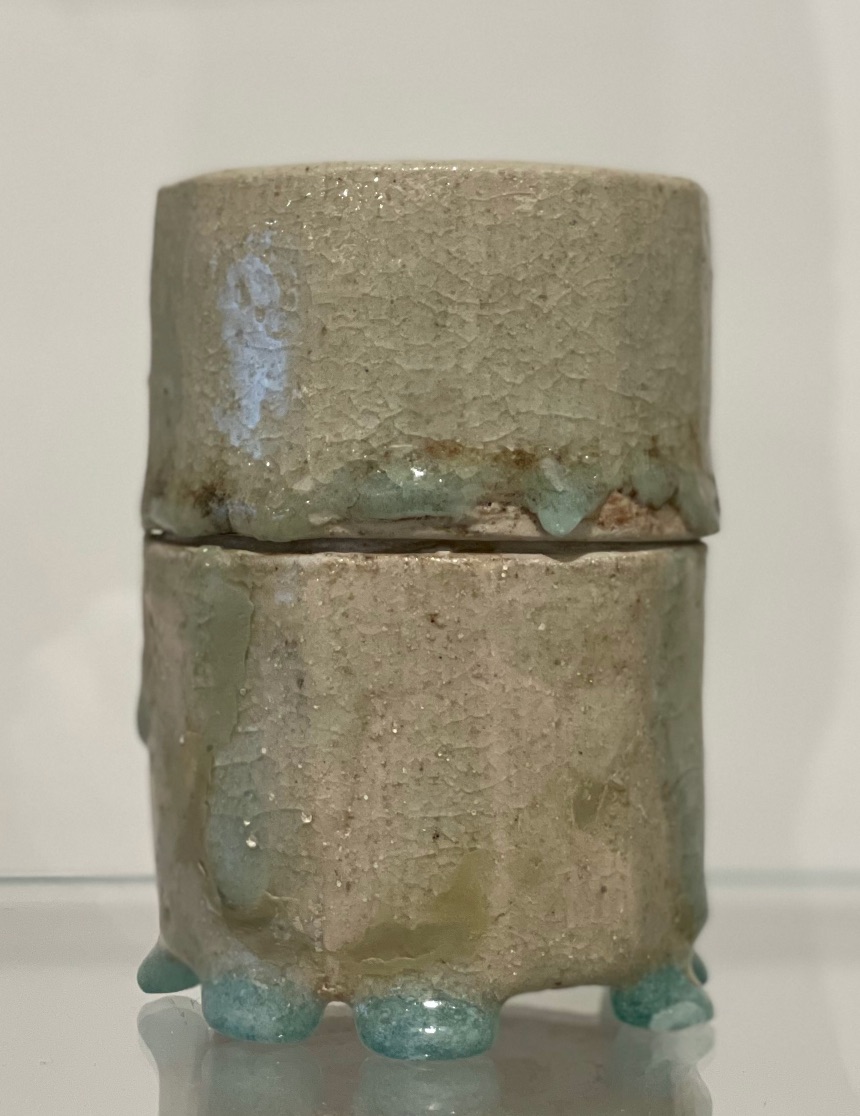
After experiencing this exhibition, I am inspired to delve even deeper into the diversity of Danish ceramics, to learn more about both the artists represented in the exhibition and the ones who are not on display, the historical as well as the contemporary. I leave with a sense of gratitude. Clay has been a key part of Erik Veistrup’s life; he describes himself as a ceramicaholic, and the collection is fascinating, boundless and intuitive. As with nature, there are still new experiences to explore, and thanks to this generosity we are now offered an insight into a collector’s universe and the wide range of Danish ceramics. Till next time, Clay!
Om Marie-Louise Høstbo
Marie-Louise Høstbo, architect MAA, Danish design and architecture specialist, writer and photographer behind the book Secret Places: The architect’s guide to distinctive buildings in and around Copenhagen published by Strandberg Publishing. Høstbo shares her inspiration on www.instagram.com/marielouise_hoestbo
Ler er livet!
Erik Veistrups samling
Til 24. maj 2021
Clay Keramikmuseum Danmark
Kongebrovej 42, 5500 Middelfart

